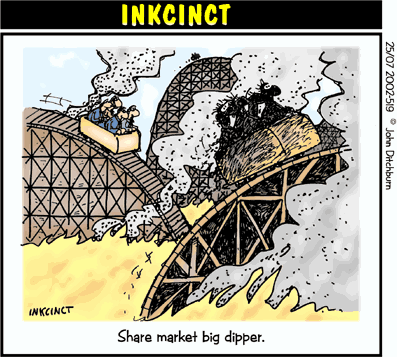Common problems facing retail investors
Last year, the stock market surged by 21.8%, or 196 points, to close at 1,096.24 compared with 899.79 at the end of 2005. Logically, all investors should have made handsome returns. However, a lot of people were still complaining about not getting good returns last year.
DESPITE the recent Kuala Lumpur Composite Index (KLCI) rally, why was it that the prices of most of my stocks hardly moved?
In general, if you analysed the top gainers during 2006, you would notice that these stocks can be grouped into a few categories: plantation and timber stocks, blue chips, companies involved in mergers and acquisitions, or produced good corporate results lately.
Other than the above-mentioned categories, most of the second-liner stocks hardly moved during the year.
Some even touched their all-time low levels. Thus, we were not surprised when some retailers were unable to get the returns they wanted.
Bursa Malaysia is getting more mature now
Lately, it has not been easy to make money from our stock market by just listening to market rumours or having good tips. Intelligent investors are starting to pay attention to companies’ performance.
The stock prices of companies that are unable to perform up to investors’ expectations will be hammered down. Companies with continued losses for every quarter will continue to sell at very low prices.
We may wonder why some investors bought those poor quality stocks instead of the good value companies. We believe they did have those good quality stocks. However, they sold those stocks the moment the stock prices moved up very high within a week.
This was because they had been holding those stocks for a long time but the prices hardly moved. They were worried that the stock price might go back to their previous level after the price surge. In most instances, the stock prices continued to climb far beyond their disposal levels.
Selling winners too soon and holding losers too long ?.
In behavioural finance, we call this phenomenon “the disposition effect”, which refers to the investors’ behaviour of selling the winners too soon, but holding on to the losers for too long.
Most investors will lock in their gains the moment their long-term holding of good fundamental stocks move up within a short time.
As a result, the remaining holdings are of those poor quality stocks and they are unwilling to sell because they feel the pain the moment they need to cut the losses.
Why do I always lose money in the stock market?
Based on our estimation, only one in 10 investors will be able to make money in the stock market. The other nine may be able to make some short-term gains but not in the long run.
Forget their original objective ?
One of the most common reasons is the retailers always forget their original objective. To win in the stock market, there is no short cut, only hard work and patience coupled with good understanding of the companies’ fundamentals. However, most investors like to speculate or trade stocks. They want quick and easy money.
Benjamin Graham, the father of value investing, in his book The Intelligent Investor, states that buying stocks without understanding the companies’ fundamentals is speculation.
In the stock market, there are two main activities – investing and trading. Investing means “buy and hold”, trading means “buy and sell”. However, most retailers apply “buy and forget” strategy, meaning they will force themselves to forget the stocks that give high losses.
They are unable to face those losses. As a result, they will always reclassify their trading stocks as “long-term investment”. The moment they change their original objective from trading to investing, they will likely to incur huge losses.
Retailers who were heavily involved in speculating on second board companies during 1996, even if they cut their losses during the market crash in 1998, they were still able to get higher prices compared with today’s prices.
Hence, investors need to sell their trading stocks the moment they sense that the market is going downwards even if it means that they need to incur high losses because trading means “buy and sell”.
download mp3 star wars melayu boleh malaysia nasyid lagu melayu uitm siti nurhaliza mawiSource : somewhere




1 comment:
As a student of statistics I can tell you that you are on the right track here. Right on target, in fact, with your high-low analysis.
The MEAN which is what this index seems to be tells you only where the middle is. With MEAN a strong outlier at one end can make the figure meaningless.
That's why we use something called standard deviation and examine the content of the centre only (one standard deviation each way). A simpler calculation is the inter-quatile range (the half in the middle.
Sometimes to get a good reading we actually discount outliers (a figure that is unusually high or low) which for the main part is a judgement call.
On recalculate I wouldn't be supprised to see an adjusted index that dropped against the previouse years index value.
I also wouldn't be supprised if this more current index didn't sit in a much wider range than the prior one.
Post a Comment